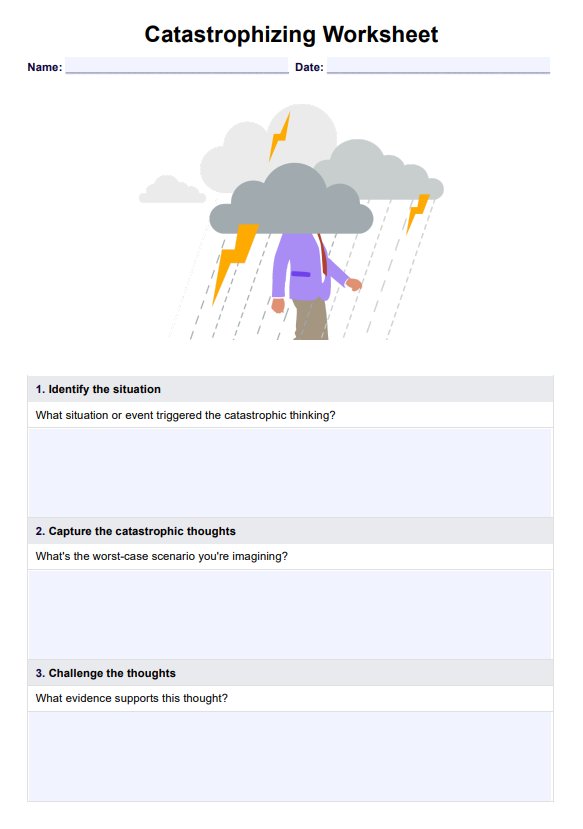Catastrophizing Worksheets are utilized by mental health practitioners, therapists, psychologists, counselors, and individuals seeking to manage anxiety, stress, and cognitive distortions.

Access this free Catastrophizing Worksheet template to challenge negative thought patterns and manage anxiety. Alleviate negative thoughts and worries, for a more balanced and realistic mindset.
Catastrophizing Worksheets are utilized by mental health practitioners, therapists, psychologists, counselors, and individuals seeking to manage anxiety, stress, and cognitive distortions.
Catastrophizing Worksheets are used when individuals experience heightened anxiety, stress, or irrational thinking. They are applied in therapeutic settings, personal development, workplace stress, academic pressures, and various life transitions.
Catastrophizing Worksheets involve several steps: identifying catastrophic thoughts, evaluating evidence, considering realistic probabilities, generating alternative explanations, creating balanced thoughts, addressing the emotional impact, developing positive self-talk, and forming action plans. Practitioners guide clients through this process to challenge and reframe negative thought patterns. Individuals can also use these worksheets independently for self-improvement.
EHR and practice management software
*No credit card required
Free
$0/usd
Unlimited clients
Telehealth
1GB of storage
Client portal text
Automated billing and online payments